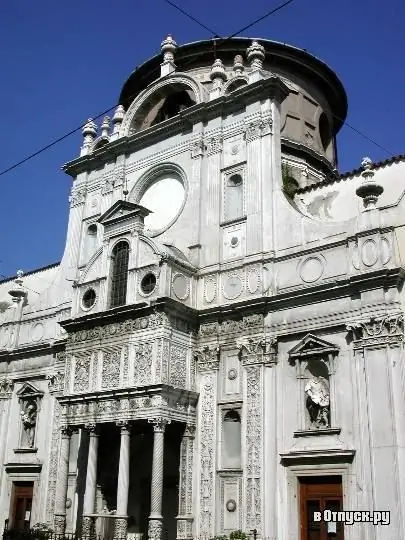
Description of the attraction
The Church of Santa Maria dei Miracoli is located on Corso Vittorio Emanuele in Brescia. Initially, it was built specifically to store the icon, which was credited with miraculous properties. The project of the church with its cylindrical front dome was carried out by the architect Ludovico Beretta in the years 1480-1490. However, the most prominent elements of the building - the elaborately decorated marble bas-reliefs on the façade and the portico - were designed by the architect and sculptor Giovanni Antonio Amadeo and made with the help of many other sculptors. In total, 16 craftsmen worked on the interior and exterior decoration of the church, among whom was the nephew of Antonio Della Porta from Osteno - Tamagnino. Such an abundance of sculptural details is reminiscent of the Renaissance appearance of the Pavia Certosa monastery.
Once in the church of Santa Maria dei Miracoli one could see the breathtaking painting "Saint Nicholas of Bari with two children in front of the Virgin Mary" by Moretto, now kept in the Pinacoteca of Tosio Martinengo. In the church there are two magnificent frescoes by Grazio Cossali - "The Baptism of Christ" and "Adoration of the Magi".
The interior of Santa Maria dei Miracoli was seriously damaged during the bombing of Brescia during the Second World War - it is interesting that the air raid was erroneous, instead of the church it was supposed to bomb the nearby Bank of Italy. At the same time, the external appearance of the church did not suffer - the wonderful facade was protected by wooden scaffolding (today there are several photographs of the temple framed by the scaffolding of those years). Subsequently, the interior decoration of the building was carefully restored, and when, after the end of the Second World War, Winston Churchill saw Santa Maria dei Miracoli, he called this church one of the most beautiful he had ever seen in his life.






